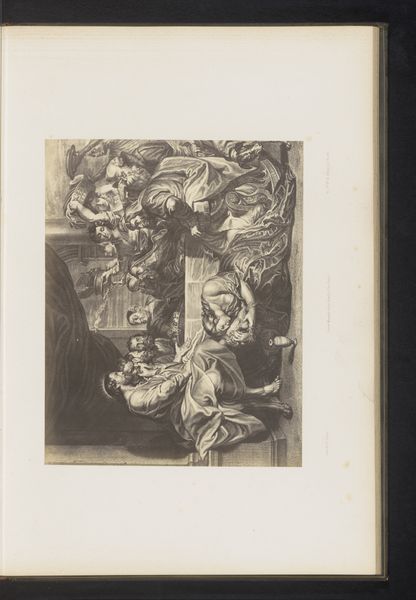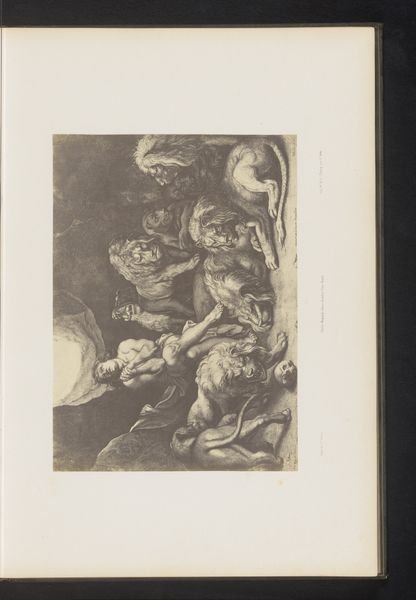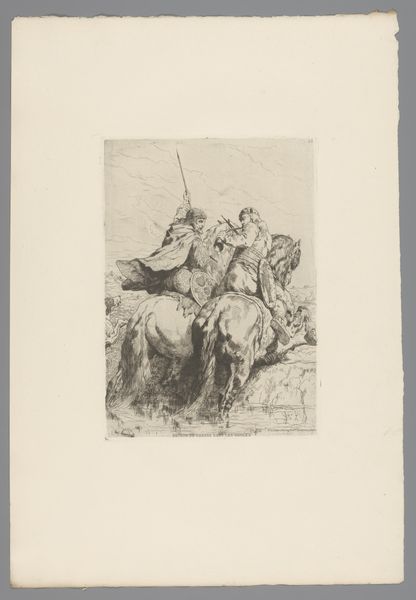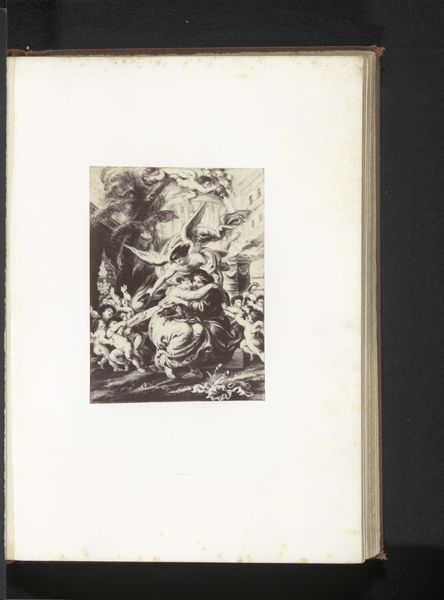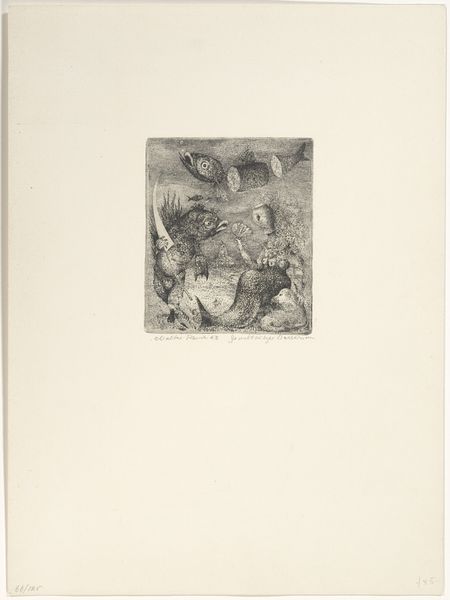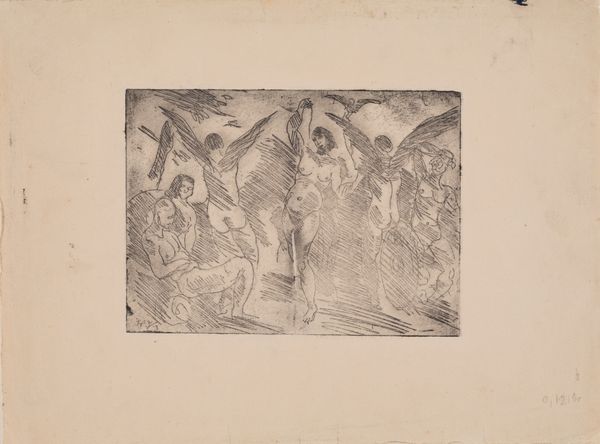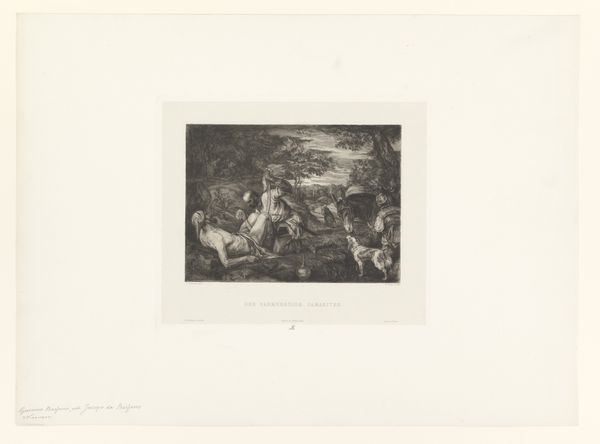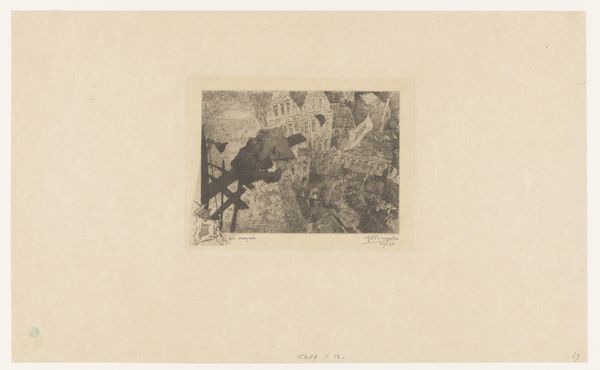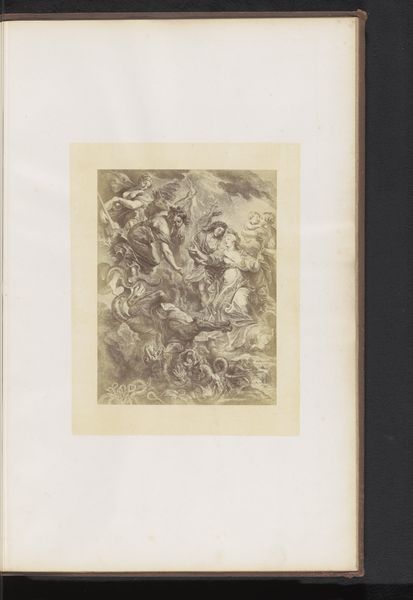
Fotoreproductie van een gravure van Het Salomonsoordeel door Boëtius Adamsz. Bolswert, naar het schilderij door Peter Paul Rubens before 1858
0:00
0:00
Dimensions: height 240 mm, width 293 mm
Copyright: Rijks Museum: Open Domain
Curator: We're looking at a photo reproduction of an engraving before 1858, originally made by Boëtius Adamsz. Bolswert after Peter Paul Rubens's painting "The Judgement of Solomon." Editor: It's striking, even in monochrome. The sheer drama captured is incredible, but I’m immediately drawn to how effectively the engraver translated the textural richness of Rubens’s painting, giving weight to the fabrics and depth to the emotional tension. Curator: Absolutely. Consider the social context: prints like this were crucial for disseminating knowledge of artworks before photography became widespread. This allows access to Rubens’s mastery to those who might never see the original. Editor: That’s a great point. I'm thinking of the process too: engraving is a laborious craft, with hours etched away in lines that build the tone and forms. You can sense the artisan’s hand replicating and, in some way, interpreting Rubens. Curator: This reproduction underscores the academic and artistic systems at play. Bolswert had to understand Rubens’ composition to translate it. This also helped build and secure Rubens’ status. These kinds of copies are key to canonization. Editor: True, but they were also commodities. It reminds us that art making has always been tied to economies. Each print potentially multiplied and democratized access, yet still within structures of commerce and ownership. And how might labor practices, or lack thereof, impacted production in Bolswert’s shop? Curator: Indeed. These kinds of reproductions really blur boundaries between original creation and its mediated image. We grapple with what authenticity even means. Editor: Ultimately, examining this photomechanical print lets us consider the story of art, knowledge, labor and distribution intertwined in just a single image. Curator: Exactly. It reveals layers of socio-political dynamics far beyond the immediately visible biblical scene. Editor: A rewarding reminder to think critically about how artworks connect with history and process, simultaneously.
Comments
No comments
Be the first to comment and join the conversation on the ultimate creative platform.


